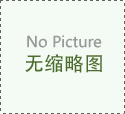What are the customs in Kaifeng?
Kaifeng, as one of the famous historical and cultural cities in China, has rich folk culture and traditional customs. These customs not only reflect the profound historical heritage of Kaifeng, but also show the daily life and festival celebrations of local people. The following are some of the main customs and characteristics of Kaifeng.
1. Traditional festival customs
Kaifeng has rich and colorful traditional festival customs, especially during major festivals such as the Spring Festival, Lantern Festival, and Dragon Boat Festival, folk activities are particularly lively.
| festival | Custom activities | Features |
|---|---|---|
| Spring Festival | Pasting Spring Festival couplets, setting off firecrackers, worshiping ancestors, and paying New Year greetings | Every house is decorated with lanterns and colorful decorations, and dumplings are a must-have for New Year’s Eve dinner |
| Lantern Festival | Appreciate lanterns, guess lantern riddles, and eat Lantern Festival | Kaifeng Longting Park Lantern Festival is grand in scale |
| Dragon Boat Festival | Dragon boat racing, eating rice dumplings, hanging mugwort | The Bianhe River Dragon Boat Race has a long history |
| Mid-Autumn Festival | Appreciate the moon, eat moon cakes, worship the moon | Traditional mooncakes are mainly made from five kernels and jujube paste. |
2. Food customs
Kaifeng's food culture has a long history, especially its snacks and night market culture are famous throughout the country. The following are Kaifeng’s special food customs:
| Name | Features | Recommended places |
|---|---|---|
| Soup dumplings | Thin skin, lots of stuffing, delicious soup | First floor, Huangjia Baozi |
| Carp baked noodles | Sweet and sour, crispy noodles | Kaifeng time-honored hotel |
| Fried jelly | Spicy and soft, a must-have at night markets | Gulou Night Market |
| almond tea | Sweet and tender, traditional drink | Xisi Night Market |
3. Folk art and handicrafts
Kaifeng's folk arts and handicrafts have distinctive local characteristics, such as Bian embroidery, woodblock New Year pictures, etc., which are all national intangible cultural heritage.
| Name | Features | Current status of inheritance |
|---|---|---|
| Bian embroidery | Delicate and lifelike, colorful | There are still professional embroidery workshops passed down |
| Zhuxian Town Woodblock New Year Pictures | Rough lines and bright colors | Be included in the intangible cultural heritage protection list |
| Kaifeng Pangu | The rhythm is exciting and the momentum is magnificent. | Common performances at folk festivals |
4. Marriage Customs
Kaifeng’s traditional wedding customs retain strong cultural characteristics of the Central Plains, with complex procedures and far-reaching implications.
| link | content | Meaning |
|---|---|---|
| propose marriage | Matchmaker connects, parents of both parties discuss | lay the foundation for marriage |
| Engagement | Exchange betrothal gifts and determine the wedding date | Symbol of formal agreement |
| Welcome | The groom picks up the bride on horseback or in a sedan chair | Festive and lively |
| worship hall | Kneel down and worship heaven and earth, parents, husband and wife. | Symbol of family harmony |
5. The combination of modern hot topics and Kaifeng customs
In the past 10 days, hot topics about Kaifeng customs on the Internet have mainly focused on tourism experience and cultural inheritance. For example:
Through these customs and activities, Kaifeng not only retains the essence of traditional culture, but also keeps pace with the times and attracts more young people to participate.
In short, the customs and culture of Kaifeng are important representatives of the Central Plains region. Whether it is festival celebrations, dietary characteristics or folk art, they are all worthy of in-depth experience and inheritance.

check the details

check the details